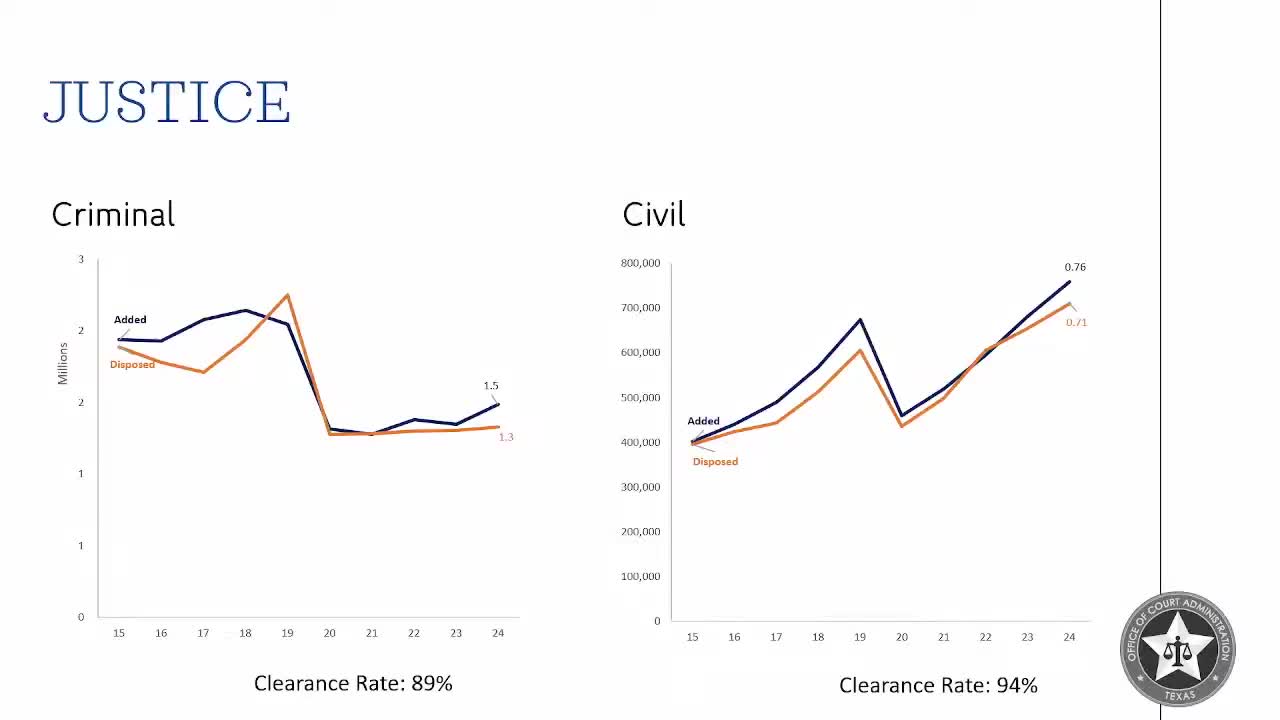Texas Courts Implement New Data Reporting Measures to Enhance Case Management
June 14, 2025 | Court of Criminal Appeals (CCA), Judicial, Texas
Thanks to Scribe from Workplace AI , all articles about Texas are free for you to enjoy throughout 2025!

This article was created by AI using a video recording of the meeting. It summarizes the key points discussed, but for full details and context, please refer to the video of the full meeting. Link to Full Meeting
The meeting also marked the first comprehensive collection of court-level data for district and county courts, following the implementation of House Bill 2384. This initiative is expected to provide deeper insights into court operations, with the first reports covering a six-month period and future reports planned to encompass a full year. The data will focus on three key metrics: clearance rates, average time from filing to disposition, and the age of active pending cases. Early results indicate that 88% of district courts maintained clearance rates above 80%, with 75% exceeding 90%, which is a benchmark set by the Office of Court Administration (OCA).
Additionally, the council discussed the ongoing development of the Court Analytics Texas project, which aims to transition from aggregate data collection to a more detailed case-level analysis. This project, in collaboration with Tyler Technologies, is set to improve the tracking of cases from inception to resolution, ultimately eliminating the need for manual reporting by counties. The pilot program will begin with smaller counties, with plans to expand to larger jurisdictions, including El Paso, which is being considered as a test site.
These advancements in data collection and analysis are expected to enhance the judicial system's responsiveness and accountability, directly benefiting Texas residents by ensuring a more efficient legal process. As the council continues to refine these systems, the community can anticipate improved access to judicial information and a clearer understanding of court performance metrics.
Converted from Texas Judicial Council - 06.13.25 meeting on June 14, 2025
Link to Full Meeting
Comments
View full meeting
This article is based on a recent meeting—watch the full video and explore the complete transcript for deeper insights into the discussion.
View full meeting
